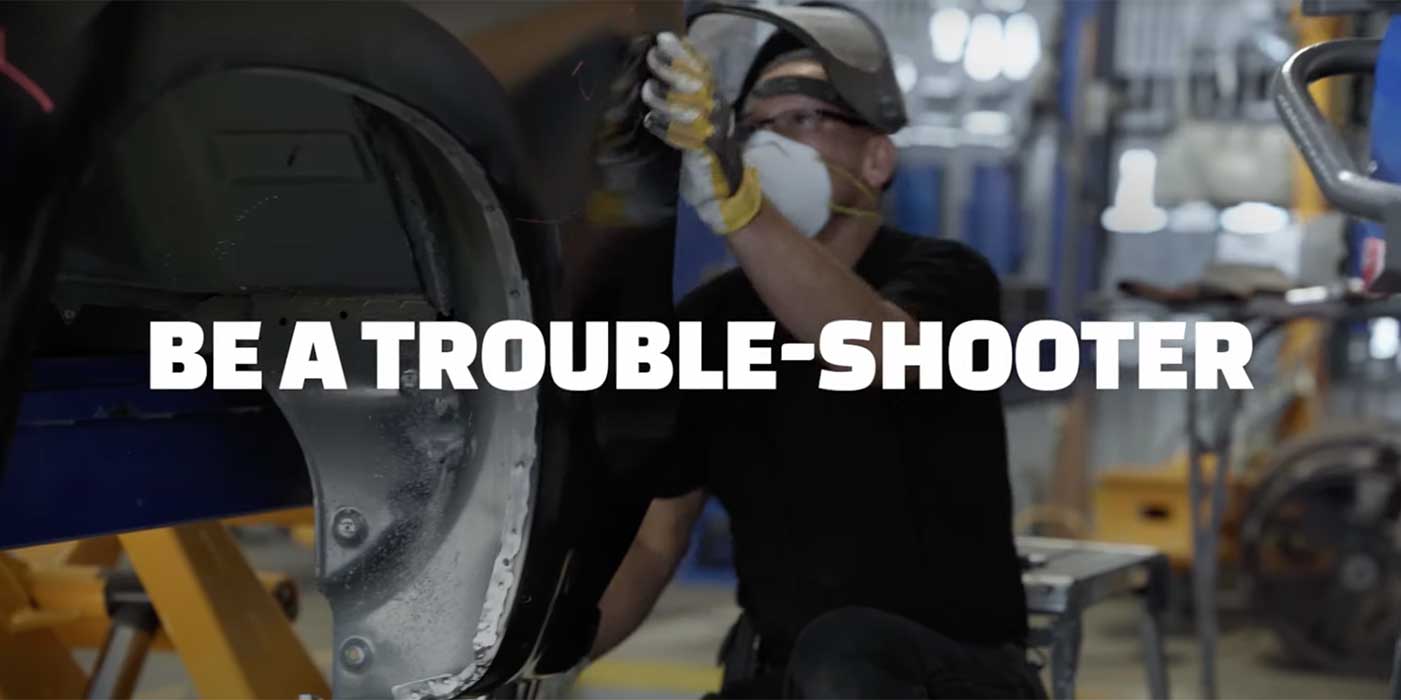As I’ve stated before, one of the greatest things that has happened to the collision repair industry in the past decade is the original equipment manufacturers (OEM) publishing and providing collision repair procedures. This was necessary due to newer manufacturing technologies along with the introduction of lighter and stronger advanced construction materials, resulting in the need for special equipment and advanced knowledge. This has provided repairers the “higher authority” to refer to and support their recommendations for various processes, procedures and materials. Repairers no longer have to merely rely on their knowledge, training and experience when preparing accurate and thorough damage/repair assessments because most OEMs have provided the required/recommended repair methodology — which should leave no questions regarding what is needed in the repair.
More OEMs are also offering certification programs to verify and ensure shops have the specific knowledge and equipment to perform proper and thorough repairs.
So why have vehicle manufacturers invested so much time and resources in providing updated information on how to repair their products? The reasons are quite simple: liability prevention, owner retention and brand loyalty.
Fickle Customers
As most of us know, consumers can often be fickle. It has been reported that 60% or more of consumers who have been involved in a significant collision become dissatisfied with their vehicle due to lingering loss and unresolved, repair-related issues. These problems create a loss of confidence and ongoing concern and doubts regarding post-repair function, safety and dependability, causing many owners to change to a different make of vehicle.
This is not a recent issue; such concerns are what fostered the issues of diminished value (DV) in that a history of damages creates uncertainty — where a potential buyer might take a gamble on purchasing a once-damaged and repaired vehicle but only at a significantly lower price.
To fend off the loss of loyal customers/owners, the OEMs want their products to be properly repaired and maintained in order to provide their customers a satisfactory and trouble-free ownership in hopes that they stay with the brand when the time comes to purchase another vehicle.
Taking this a step further, some manufacturers mandate that a repairer be certified before they can purchase and acquire structural and other parts needed for repairing their vehicles.
Riding for the Brand
Most people would think, as I once did, that if anyone was going to provide the most thorough repair it would be the authorized new car dealership’s service departments and body shops. After all, they sell the products and should know them inside-and-out and would take special pride in maintaining them properly by adhering to the manufacturer’s specifications.
Besides the transfer of potential liabilities, auto manufacturers prepare repair procedure recommendations/requirements to enable and encourage collision repairers to perform proper repairs to restore damaged vehicles to pre-loss condition in safety, function, appearance and value to the best of reasonable human ability.
Although the intent is clear for the manufacturer’s efforts and investments to provide procedures for repairers, there is a crucial yet simple disconnect regarding the certified repairer program: the lack of assurances that certified repairers and authorized dealers are indeed performing repairs as called for by the manufacturers.
Lack of Accountability
Unfortunately, I, along with many other collision repairers, have learned and experienced through owning auto body shops that, all too often, dealership repairers do not always follow the OEM repair procedures. To make matters worse for quality-oriented independent repairers, it has become more commonplace for insurers to seek out and use misinformation obtained from some dealer repairers in their efforts to deny consumers OEM-recommended repair procedures.
Insurers have increasingly been seeking out authorized dealer mechanical and body shops that do not follow OEM repair recommendations of late. They’re employing such illegitimate information to deny certain procedures by providing statements such as the following, which were copied and redacted from a recent e-mail to a quality independent repairer’s customer:
Mr. (Customer),
We are always willing to review any documentation to support the replacement of parts or to add any additional operations for repairs. We have reviewed the documentation that has been presented to us as well as reached out to professionals at multiple Porsche dealerships. In talking to both the service and body shop side of the Porsche dealerships, they advised that based on the damages to the vehicle, the steering column replacement would not be warranted at this time. If you or the shop has any additional information, we would be happy to review.
Thank you,
Claim Supervisor
What appears to be taking place is, because some authorized dealers (that may or may not be DRP participants) are saying they don’t always follow the OEM repair procedures, this somehow establishes and supports the insurer’s contention that such requirements and recommendations do not apply. As a result, they’re denying payment for such procedures, some of which are safety-related. This, of course, defeats the OEM’s efforts to ensure proper and thorough repairs are being carried out and robs the unwary owner/customer (and their family) of a properly performed and safe repair.
Several years ago, my company, Auto Damage Experts, Inc. (ADE), was hired by an organization that provided OEM certifications across the nation. Our responsibilities included performing on-site physical inspections of repairer candidates who sought certification. Our task was to inspect the facility and credentials to ensure it had the basic requirements as called for by the manufacturer, which included verification of the required equipment and training of their staff and their ability to obtain and follow the OEM repair procedures. This did not include any form of accountability other than that needed to become certified. There was no follow-up to verify and ensure the OEM repair procedures were being employed or if they were being employed properly to remain certified.
This all sounds good … in theory, that is.
The benefit to repairers in having one or more of these manufacturer certifications is that it indicates to prospective customers that the certified shop has invested in the time, training and equipment and as such is qualified to work on their vehicle — which can be a great marketing message for a repairer. However, while all this sounds great, there is one aspect of OE certifications that remains absent: accountability. The accountability to ensure that certified repairers are indeed performing repairs as prescribed is sorely lacking.
Correcting the Issue
So what can vehicle manufacturers do to correct this issue? They can start by making efforts to ensure that their authorized dealers and certified repairers are adhering to and making concerted efforts to follow proper repair procedures during each and every repair.
How can this be accomplished? By performing or arranging for spot inspections of repairs (in-process and completed) and reviewing repair documents (repair assessments and printouts, i.e., scanning results, three-dimensional measurements, suspension alignment results, etc.) to verify that damage/repair assessments are being written properly and thoroughly and the proper parts and materials are being called for and — equally important — being utilized.
Those repairers that are audited and inspected and found to be in full compliance could then be identified as “top performers”. This would provide assurance to the vehicle owner and show them that the manufacturer truly cares about the ongoing welfare of their customers as well as enable the repairer to receive a report card on their performance which they could then use in their marketing. This could also play a significant role in the repairer’s ability to remain in good standing as an OEM-certified shop. It would also expose those who fail to meet the desired grade, who could then be provided with the opportunity to attain further training and counseling as an incentive to better themselves and avoid the loss of the manufacturer’s certification.
Additionally, some manufacturers mandate that a shop be certified before they can purchase and acquire structural and other parts needed for a repair of its vehicles. This would enable the OEMs to ensure that those that order their parts are performing proper repairs, encouraging certified repairers to work to avoid losing their certification and the privilege of attaining needed parts.
This instilled accountability would result in better service to the OEM’s customer/owner and provide a level of assurance that their product will secure the highest possible ownership retention.
Summary
This lack of OEM oversight and accountability to ensure that proper repair processes are being carried out continuously is becoming a major concern for the collision repair industry at large.
It is becoming increasingly common for insurance claims people to use authorized dealer misinformation to reduce their claim payments while making it extremely difficult for quality repairers to properly serve their customers and avoid potential liabilities.
Until changes are made to correct this issue, quality repairers who encounter a dealership that provides such misinformation must keep their customers informed of such issues. I recommend that both the customer and the repairer demand that the dealership and insurer put their positions in writing and provide their reasoning as to why an OEM recommendation won’t be adhered to and will be denied so they too may share the potential liabilities in the event the unthinkable should occur.














